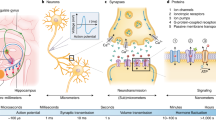Abstract
The future of brain research lies in the development of new technologies that will allow to advance our understanding of how this complex organ processes, integrates, and transfers information. Some of these new technologies can interact with the brain by recording the inter-neuron communications, decoding these communications, stimulating brain areas, or retroactively taking actions based on the communications analysis. A new paradigm that holds promise for the development of complex brain machine interface, draws from a parallel utilization of brain stimulation, electrophysiology, and neural data analysis. These complementary approaches can be used to close the loop between the neuron signalisation and some biological or mechanical means, through the utilization of smart implantable sensors and actuators. Among several future applications in medicine, this approach is envisioned to allow artificial neural connections for bypassing a deficient neural circuit, induce plasticity, prevent seizures, and control artificial or biological body limb.
This chapter covers the techniques and circuits commonly used to design closed-loop/bidirectional neuroprosthetic systems. Among others, it discusses circuits for the whole neural signal acquisition chain, from the neuron to the bioamplifier and the analog-to-digital converter. This discussion is followed by the presentation of neuro electrical and optical stimulation circuits for optogenetic stimulation. The loop between the neural acquisition chain and the stimulation circuits is closed with the presentation of closed-loop/bidirectional neuroprosthetic systems. Both systems with neural-input/physical-output and neural-input/neural-output are introduced, and digital techniques to decode the neural signal for issuing the proper stimulation feedback are discussed.
Similar content being viewed by others
References
Abdelhalim K et al (2011) Phase-synchronization early epileptic seizure detector vlsi architecture. IEEE Trans Biomed Circuits Syst 5(5):430–438
Breanne CP et al (2015) Comparison of spike sorting and thresholding of voltage waveforms for intracortical brain–machine interface performance. J Neural Eng 12(1):1741–2560
Brocker DT, Grill WM (2013) Principles of electrical stimulation of neural tissue. Handb Clin Neurol 116:3–18
Butz N, Taschwer A, Nessler S, Manoli Y, Kuhl M (2018) A 22 v compliant 56 μw twin-track active charge balancing enabling 100% charge compensation even in monophasic and 36% amplitude correction in biphasic neural stimulators. IEEE J Solid State Circuits 53(8):2298–2310
Deisseroth K (2011) Optogenetics. Nat Methods 8(1):26–29
El Hady A (2016) Closed loop neuroscience. Academic
Gagnon-Turcotte G et al (2020) Smart autonomous electro-optic platforms enabling innovative brain therapies. IEEE Circuits Syst Mag 20(4):28–46
Haas M, Vogelmann P, Ortmanns M (2018) A neuromodulator frontend with reconfigurable class-b current and voltage controlled stimulator. IEEE Solid-State Circuits Lett 1(3):54–55
Harrison RR (2003) A low-power integrated circuit for adaptive detection of action potentials in noisy signals. IEEE Annu Int Eng Med Biol Soc (EMBC’03) 4:3325–3328
Horch KW, Kipke DR (2017) Neuroprosthetics: theory and practice. World Scientific, p 8
Karkare V, Gibson S, Markovic D (2011) A 130-μw, 64-channel neural spike-sorting DSP chip. IEEE J Solid State Circuits 46(5):1214–1222
Kassiri H et al (2017) Rail-to-rail-input dual-radio 64-channel closed-loop neurostimulator. IEEE J Solid-State Circuits 52(11):2793–2810
Mendrela AE et al (2018) A high-resolution opto-electrophysiology system with a miniature integrated headstage. IEEE Trans Biomed Circuits Syst 12(5):1065–1075
Netoff TI, Schiff SJ (2002) Decreased neuronal synchronization during experimental seizures. J Neurosci 22(16):7297–7307
Newman LP, Fong MF, Millard DC, Whitmire CJ, Stanley GB, Potter SM (2015) Optogenetic feedback control of neural activity. eLife. https://doi.org/10.7554/eLife.07192
Nguyen TK et al (2014) Closed-loop optical neural stimulation based on a 32-channel low-noise recording system with online spike sorting. J Neural Eng 11(4):046005. https://doi.org/10.1088/1741-2560/11/4/046005
Nguyen AT et al (2020) A bioelectric neural interface towards intuitive prosthetic control for amputees. J Neural Eng. https://doi.org/10.1088/1741-2552/abc3d3
Obeid I, Wolf PD (2004) Evaluation of spike-detection algorithms for a brain-machine interface application. IEEE Trans Bio-Med Eng 51(6):905–911
Shalchyan V, Jensen W, Farina D (2012) Spike detection and clustering with unsupervised wavelet optimisation in extracellular neural recordings. IEEE Trans Biomed Eng 59(91):2576–2585
Sharma K, Pathania A, Pandey R, Madan J, Sharma R (2021) Mos based pseudo-resistors exhibiting tera ohms of incremental resistance for biomedical applications: analysis and proof of concept, integration. Integration 76:25–39
Sodagar AM et al (2009) An implantable 64-channel wireless microsystem for single-unit neural recording. IEEE J Solid State Circuits 44(9):2591–2604
Author information
Authors and Affiliations
Corresponding author
Editor information
Editors and Affiliations
Rights and permissions
Copyright information
© 2022 Springer Science+Business Media, LLC, part of Springer Nature
About this entry
Cite this entry
Gagnon-Turcotte, G., Tsiakaka, O., Bilodeau, G., Gosselin, B. (2022). Closed-Loop/Bidirectional Neuroprosthetic Systems. In: Sawan, M. (eds) Handbook of Biochips. Springer, New York, NY. https://doi.org/10.1007/978-1-4614-3447-4_31
Download citation
DOI: https://doi.org/10.1007/978-1-4614-3447-4_31
Published:
Publisher Name: Springer, New York, NY
Print ISBN: 978-1-4419-9318-2
Online ISBN: 978-1-4614-3447-4
eBook Packages: EngineeringReference Module Computer Science and Engineering



